You wrote in your artist statement that your approach to photography is very personal, intuitive and at the same time you try to reflect changes in Russian mentality which take place now (that is already, in my opinion, social-documentary approach). How do you manage to combine the two approaches – intuitive one and social-documentary one? And which one is closer/more important to you?
Alla Mirovskaya (AM): I think there is no contradiction here. I track changes in Russian mentality mainly through my personal perception. Whether I like it or not, I’m one of those who bear it, since I was born and bred in the Soviet country.

© Alla Mirovskaya form the series 'Distant and Close'
My apologies for the truism, but I can’t explain this without using it. Being an artist, an author means being brave enough to have personal vision or understanding and ready to make it public in your work. Telling the truth about the authorities and telling the truth about yourself are undoubtedly different things, but bravery is needed for both. It isn’t simple for me. I grew up in a family conservative enough in that respect, which I think was typical for many in our country. I overcome myself, try to be open and honest while talking about personal things. Why personal? First of all, I’m a convenient research subject for myself, always at a hand’s reach. This work is comfortable: I like heart-searching, I’m honest with myself, I’m not afraid of my weaknesses. All said, I consider the subject of research secondary. Today it’s me, tomorrow me again, and then I’ll turn to something else. The approach is what matters more.
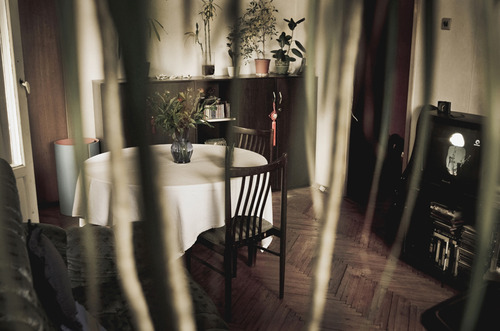
© Alla Mirovskaya form the series 'Distant and Close'
It might not be completely right, but something inside me persistently resists the intention to designate and map a certain territory for myself somewhere on the imaginary map of photography. Maybe it’s because specifying the field I work in means temporarily limiting or excluding at least some opportunities for my own development. And I like trying something new, doing things I haven’t done before, exploring the unknown. It is true not just for photography, but for many other sides of my life.
Please, let us know how did you start doing photography. Who was your first teacher? What changed in your attitude to photography since then? I know that you studied photography at Andrey Rogozin’s workshop, then in Fotodepartament, did you study it somewhere else? In Moscow there are a lot of photo schools and there are quite good schools among them (for instance, The Alexander Rodchenko School of Photography and Multimedia).
AM: I started taking photographs when I was studying journalism at the Moscow State Pedagogical University. Those photos were often illustrating my own articles. I did my first thought-out project later, when I quit the reporter job and worked in advertising. I did copyrighting and many other quite interesting works, but from time to time I felt displeased and couldn’t rationally explain why. This feeling vanished only when I took photos. I felt like a discoverer who explored the urban space. That’s when I came up with the Moscow metro project idea.
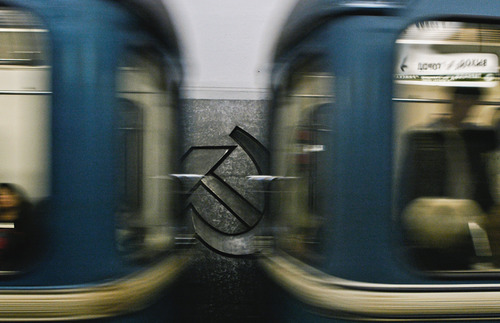
© Alla Mirovskaya form the series 'Moscow Metro'
Moscow Metro is a unique place. Built in the Soviet union, it retained the original identity, although the social environment changed. This contrast agitated me. I was interested in the fact that in Metro the poor and the rich, the young and the old ― many different people involuntarily came together. I wasn’t completely sure what I wanted, I didn’t know how such things should be done, I was afraid that the police or inadequate passengers would interfere etc. But I was inspired by Bruce Davidson and the underground project he did in the 80’s. It helped me start and manage finishing this work. I still feel nostalgic about the Metro project, which was my first independent one, and from it I learned many things: how to deal with strangers, be “invisible”, and trust myself in a photographic sense. I have mostly negative memories of my first teachers. Among them, for example, was a photographer who was very famous in Russia. I studied under his supervision for several months and it left me feeling humiliated and ashamed for doing things wrong. I guess that being suited for teaching isn’t necessarily implied by being professional.

© Alla Mirovskaya form the series 'Moscow Metro'
For some time I educated myself, getting inspiration from the works of Magnum Photos photographers, since I was obsessed with reporting photography. I watched, analyzed, redrew the photos I took from books and found on the Internet, then I took my own photos. After that I took some photography workshops at the Photoplay School in Moscow, then I completed a year-long course at the Positive photo school, and at the moment I take lessons at the Photo Department school in St. Petersburg. The Rodchenko school is not for me, since I have a full time job and they have only day-time classes. I changed my attitude to photography since then. At that time I was interested in life’s manifestations, and now my interest shifted towards abstract and being able to represent it through photography.
Which photography workshops or courses were crucial for your photographical development? Which teacher was the most influential?
AM: My best photography teacher was Andrey Rogozin, and I consider his project course the most useful for me (I don’t count the Photo Department courses, since they have completely different approach). A work on a project starts long before you take a first photo – this simple but essential principle became a foundation for me, though I think I still have many things to learn. My emotions always forced me to start the shooting itself as early as I could. I am very grateful to Andrey for being careful with his students’ personalities. I guess it is a rare approach. In the end, you need to gain knowledge and technical skills by yourself. But the artist inside you needs support. At least I’m wired this way. Seminars, lectures and workshops of world’s best photographers that take place in Moscow and St. Petersburg are also of great support. When you get feedback from experienced experts, you get inspired and grow with double speed. This is what my experience of participating in workshops held by Magnum Photos documentary photographers Steve McCurry and Christopher Anderson was like. Their precise assessments and spot-on comments immediately let me see my weak sides and gave me ideas as to how to work on them in future. Throughout these seminars big photographers usually tell openly how they think, search, shoot photos and do selection. While listening you realize they also have doubts (not just you), you get to know about their methods, you find out their professional tricks and try to figure out what makes them so accurate and their works so powerful. And learn that - the power and the accuracy.
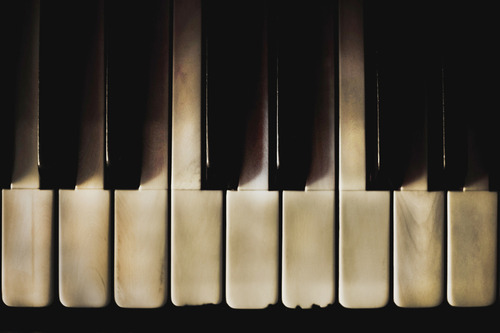
© Alla Mirovskaya form the series 'Distant and Close'
At the moment you attend a course of Nadya Sheremetova in Fotodepartament . How this experience influenced your art? What new did you open for yourself in photography?
AM: It’s my third year there! Before Nadya’s group I took the “Theory and practice of contemporary photography” course at Igor Lebedev’s group. During that time I took various photography courses, a small circle of people fond of it has formed and I still keep in touch with many of them. Once we went out and discussed our current projects. One girl who studied in Nadya’s group at Fotodepartament showed a series she did at that time. She captured routine life, but the pictures were full of some other meaning, far beyond the photos themselves. It was very inspiring. This is when I heard of Fotodepartment for the first time.
For me the education process should focus on considering theory, culture, and philosophy of photography. This knowledge is like a breath of fresh air, it is essential. In order to genuinely understand contemporary photography one needs to know not just theory, but names, variety of schools that existed in the field and current photography trends. It matters for me, and Fotodepartament courses devote much attention to these subjects as well. Studying isn’t easy. You have to be ready to overcome your current level and grow. It feels like a challenge, which in my case helps. Sometimes the volume of educational texts I have to read is too much and I never manage to comprehend it wholly.
I am used to remote education, since Fotodepartament is in St. Petersburg. I connect to the group with Skype video calls. Sometimes the connection drops, but all in all it’s almost like real participation, when you are there in person. You always get to take part in the discussion, make comments. The students are to do various creative activities. Everyone works on their own project, prepares reports on theory and writes texts, you are also free to collaborate. It’s a real comprehensive preparing for your further free float.
I remember vividly how I attended an educational photography conference held by Fotodepartament within the last year’s course. The conference was aimed at discussing the current state of photography over the world and ways it has to develop in. Fotodepartament’s students prepared their reports. The subject I chose was “Photography and cinema”, and in part it was later developed in my project called “Espace Qeulconque”. While I prepared for it and did the reading, a very special field of knowledge opened to me ― I saw the nuances of inter-influences and joint opportunities between photography and cinema as today’s media. I have been studying this subject since that time and probably some future project might come out of it, or maybe even something different.
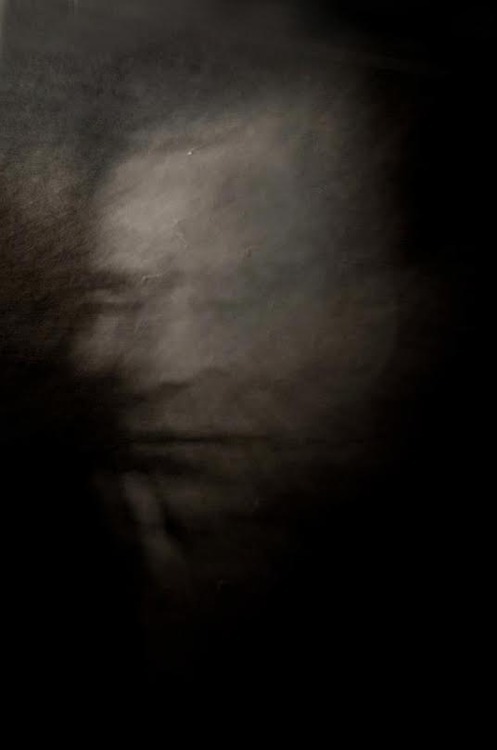
© Alla Mirovskaya form the series 'Life of the gone-out stars'
Throughout over two years my interest to photography grew and the focus shifted. I am now drawn towards projects based on documentary work, which go beyond the frames of certain events or phenomena and study the interconnections between photography and other media in a similar respect.
I also see my future growth lying in the field of modern methods of editing photos, working with exposure, the appropriation technique and other exciting methods which I haven’t got to try yet. I reflect often on what photography is and what it means for me. I feel the curiosity, the yearning to search, to find out. Photography is the tool in my disposal. The fact that the truth can’t be fully comprehended (there is no single answer to any question), the uncertainty of reality, the ambiguity of things rouse my interest even more.
Photography is also my means of active interaction with world. I need to sift through myself the things that happen and give them back in the form of images, stories and abstraction. It is important that a full cycle goes on, including the feedback, the reaction to my works. I might be driven by vanity but I’d rather think that this in not the single and not the key motive. The feedback, the interest of people to what I do as a photographer augments my feeling of being alive. It is some kind of an approval that I live, that I exist. This is important.
I liked paintings even when I was a child, but I wouldn’t become an artist, the brush is just not my kind of tool. Camera is a different deal. It may be an illusion, but I feel like it protects me, gives me freedom and at the same time more control over my own life. I have this persistent feeling that photography makes time longer. It seems like minutes, hours and days flow slower. I like it. I found out that I appreciate such characteristic of photography as stillness. It creates space for reflecting, and I like stopping and thinking. It is also important that photography is memory, its way to be material. It enables saving an exposure of the past and it can be attributed to someone from the past.
How do you manage to combine full-time job and studies of photography? You work as a marketing analyst in the company. I guess, after the whole working day it is hard to find time and energy for a creative work…
I guess what helps is that I don’t have a mere office job. I develop concepts and arrange production of new perfume products. There is routine work, like everywhere, but there is something common with art in this. The perfumes themselves, for example. Or the concepts, though their aim is commercial, that is completely different. I’ve been asking myself some questions lately ― what is the most valuable thing in my life, what do I spend the most time on (apart from family and sleep)? I can say that the most important activity for me is photography, and the thing I spend more time on is photography; the ratio is approximately 25/75. My objective is to change that. It isn’t simple, because there is also the money issue. But I think that it is sensible to spend the largest portion of your life on the most important.
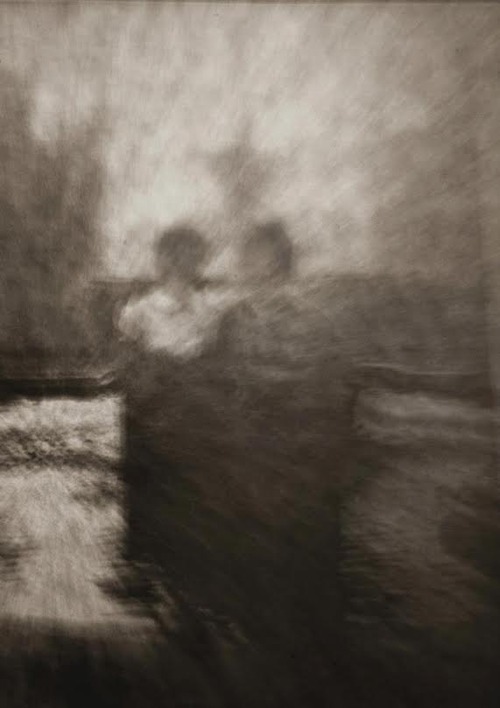
© Alla Mirovskaya form the series 'Life of the gone-out stars'
Please, tell us about your project “Distant and Close”. Was it done during a course in Fotodepartament?
AM: Yes, within the “Theory and practice of contemporary photography” course, supervised by Igor Lebedev. It deals with the phenomenon of human intimacy, the nature of which is ambiguous and contradictive. When it started I had a different, more nostalgic idea about the house I lived in since I was a child and my memories. Igor suggested turning the project towards relationships, “taking tn to another level”, as he put it. I agreed, because I felt it was a challenge. It was hard to decide to show the family relations the way I really see them. Is it correct “tо wash one’s dirty linen in public.”?
We started. Mom was nervous. She wasn’t used to be taken photos of. She didn’t like me intervening in her private space. We spent hours talking about those things. We discussed the relationship we have, the project and photography in general. It was the first time mom encountered it so close. I eventually managed to convince her to give me freedom in the shooting process, and then it went smoothly. Overall, I worked more on the touch, constantly untangling the snarl of emotions and thoughts that I came up with during the project, inventing things, thinking them over, redoing many parts, trying to follow the course, discussing the ideas and pictures with Igor and the group. This method might not be perfect, but I work like this now, with labor and persistence.
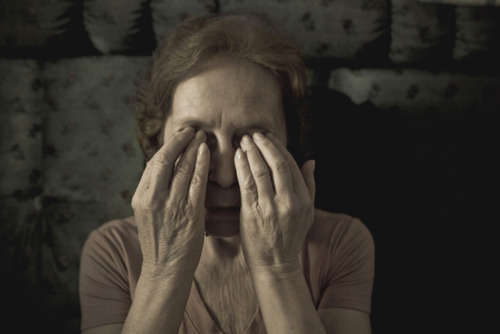
© Alla Mirovskaya form the series 'Distant and Close'
Which contemporary artists/photographers are close to you, in your opinion?
AM: My current favorite is American photo artist Roni Horn. I like all her works, every piece she created, but most of all I like two books from a series about Iceland named “To Place”. The first is called “Arctic Circles” and embodies the concept of life’s cyclical nature. Roni Horn took photos of an elderly family couple who live in a remote area of Iceland by the ocean shore. She took hotos of their house, their daily routine, of themselves, and the pictures form some kind of a circle, a cycle. Not far from their homes the imaginary line of polar circle lies. I am fascinated by the fact that this work embodies the idea of arctic circle as an abstract geometry in the ocean, embodies it in a visual way with certain people and things. I like thinking about that. The second book, called “You are the weather”, shows how human face becomes a place, a landscape. It includes a hundred variants of pictures of a girl’s face, taken in various thermal springs around Iceland that differ from each other in barely recognizable nuances that the surrounding landscape conveys to it. These pieces are famous and they were created quite a long time ago, but if I like some work it isn’t that important for me how contemporary it is.
What was your latest fascination?
AM: A book called “The Arrangement” by Ruth Van Beek. I bought it last November in Paris at the OffPrint fair. I am inspired by the lightness, the sharpness of her mind and the ability to create collisions of visual contexts, which result in new worlds and meanings being born. It is a truly wonderful book.
What project are you working on at the moment?
AM: At the moment I am working on the archive theme. Some ideas are beginning to form. I find a beautiful thought of Russian philosopher Sergey Lishaev ― he said that old photos and faded stars are alike. People in the pictures are gone, but the light that came from them, which they left in the photos, is visible to us through so many years. I took a couple of test pictures following this ideology and I’m trying to figure out how I feel about them. Another idea deals with the mechanisms our memory uses, particularly when it rebuilds the constructions from the past in the present. I try to show how memory works, embedding old photos into the present and recreating the activities of my ancestors. I also have some test photos and the result of an experiment, when I did embroidering (it was a traditional activity for women in my family) over an archive photo. The third idea considers analyzing family archive photos taken within a period of several decades in a search for clichés. This seems interesting to me, because it tells about the way of life and the values of those generations, and highlights the relationships between them. At the moment it is hard to say what the result will look like. I will most likely realize one of the ideas, but I might do all three.
Would you consider your photography as a auto therapeutical tool? Among your portraits there are a lot of self portraits. What does this self representation mean to you?
AM: If you mean that working on a project helps me live through something, then yes, there are such works among mine. But it is more of a side effect, not the motive or the aim. My aim is to find something, discover or learn. I guess this is more accurate. Regarding the pictures of myself, I am not so sure. Originally I wanted to overcome my fear of being in front of a camera, not holding it in my hands. I felt so vulnerable, so unprotected in front of its mechanical sight, and I wondered why. Then I thought of the following. A portrait is considered as a photographer’s view of a person. And whose is this view when one does self portraits? It seems the sight should be camera’s. But camera is a device, not a person being able to see. I am mesmerized by this contradiction. There is something in it. I am trying to understand what it is. That’s why I go on doing self portraits.
---
LINKS
Alla Mirovskaya
Russia
share this page